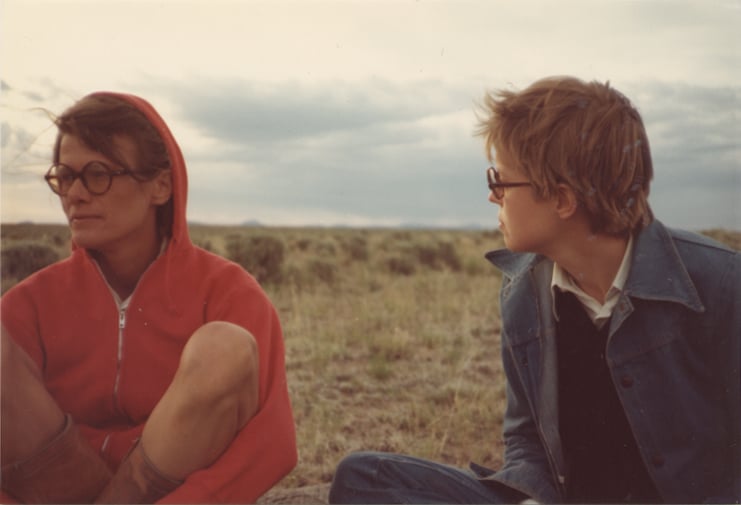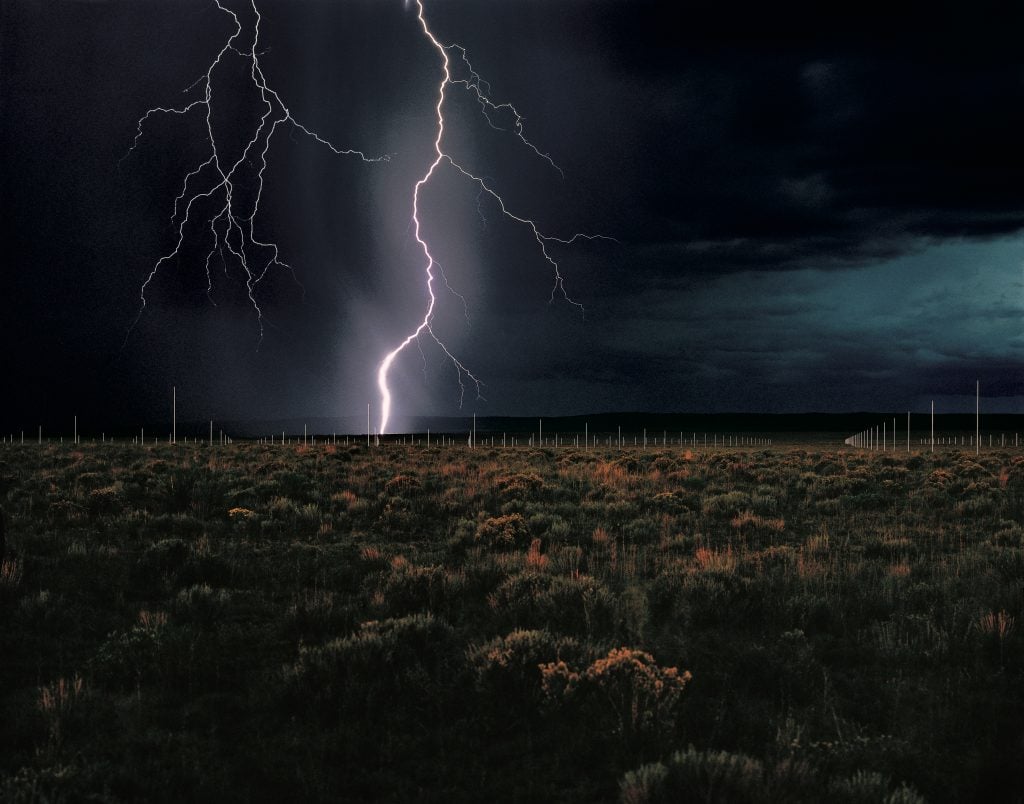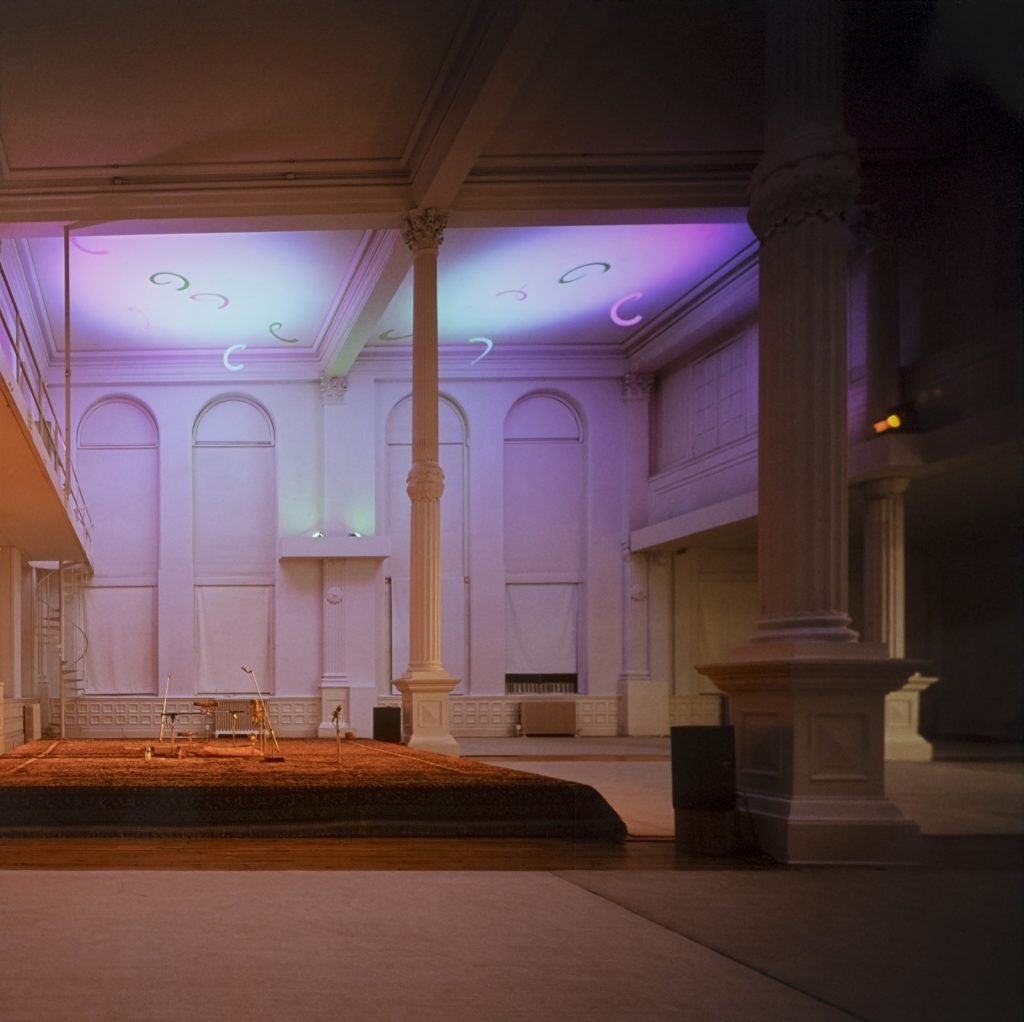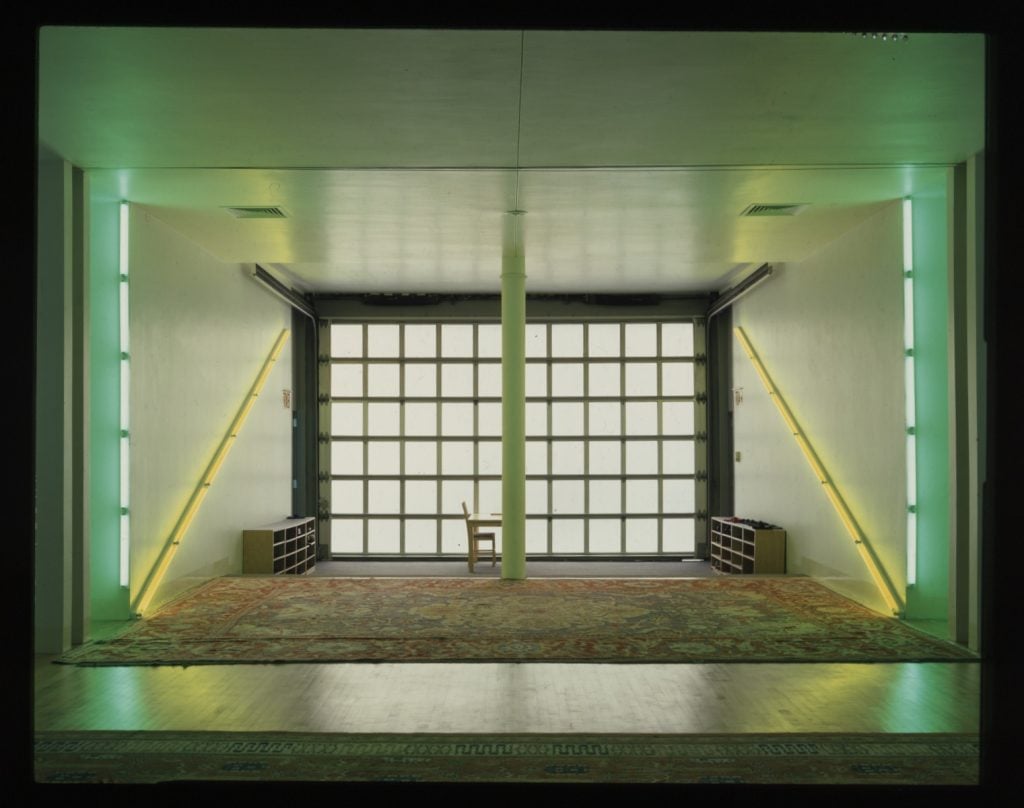Gallery Network
Dia Art Foundation’s New Interactive Online Timeline Traces Its Storied 50-Year History
The microsite allows visitors to take a deep dive into the foundation's rich history of exhibitions, programs, and artist collaborations.

The microsite allows visitors to take a deep dive into the foundation's rich history of exhibitions, programs, and artist collaborations.

Artnet Gallery Network

Founded in 1974 by Philippa de Menil, Heiner Friedrich, and Helen Winkler, this year Dia Art Foundation is celebrating its 50th anniversary. Marking the occasion, an interactive online timeline lets users take a deep dive into the dynamic history of the institution and explore the vast array of exhibitions and projects, programs and partnerships that have made it what it is today.

Dia co-founders Helen Winkler Fosdick and Fariha Friedrich at The Lightning Field site, western New Mexico (ca. 1976). Courtesy of the Dia Art Foundation.
Of its major locations, Dia Beacon, Dia Chelsea, and Dia Bridgehampton serve as loci of contemporary art, hosting permanent and long-term exhibitions and major installations. Dia’s maintained sites, however, have come to recognized as the forefront of contemporary art preservation, and include such iconic pieces as Walter De Maria’s The Lightning Field (1977) in Western New Mexico, Nancy Holt’s Sun Tunnels (1973–76) in Utah’s Great Basin Desert, and Robert Smithson’s Spiral Jetty (1970) in the Great Salt Lake.

Detail of Walter De Maria, The Lightning Field (1977) in western New Mexico. Photo: John Cliett. © Estate of Walter De Maria. Courtesy Dia Art Foundation Archives, Beacon, New York.
Designed by Pentagram and programmed by Area 17, the digital timeline features more than 100 events positioned over the course of the complete history of the Dia Art Foundation. Whether visitors are familiar with the foundations long and storied history or are just discovering its unparalleled commitment to the promotion and preservation of art, the new interactive website offers insight into the myriad endeavors and projects that foundation has spearheaded with incredible detail.

Detail installation view of La Monte Young and Marian Zazeela, Dream House (1979–85), at 6 Harrison Street, New York. Photo: John Cliett. © La Monte Young and Marian Zazeela. Courtesy of Dia Art Foundation Archives, Beacon, New York.
Reflecting on the history, present, and future or Dia Art Foundation, Senior Adjunct Curator Donna De Salvo, who has experience working with the foundation both in its early days and recently, said, “For an institution that began with a long-term commitment to a disparate group of artists whose work was not so easily accommodated by the art world of the time, Dia has not only sustained those early commitments; it has continued to identify and commit its resources to new, equally distinct, far more disparate artists. And perhaps unexpectedly, from the vantage of its 50-year anniversary, there’s a sense of how those fifty years can be read as a history.”

Installation view of Dan Flavin, Masjid al-Farah (1982–87) at 155 Mercer Street. Photo: Carol Huebner Venezia. © Stephen Flavin/Artists Rights Society (ARS), New York.
Observing of recent events at the foundation, De Salvo continued, “Steve McQueen’s Bass, an immersive sound and light installation that opened May 12 at Dia Beacon, is emblematic of the way in which Dia works with an artist to provide the opportunity, space, and resources to realize their vision. Coming from the Greek and meaning ‘through or between,’ the project also gets to the heart of what Dia, Greek for ‘through or between’ is, a conduit between artists and publics.”
Ultimately, the interactive history website offers greater contextualization for Dia Art Foundation exhibitions and events—including the new major McQueen commission—adding a new dimension to the visitor experience.
Learn more about the Dia Art Foundation here.